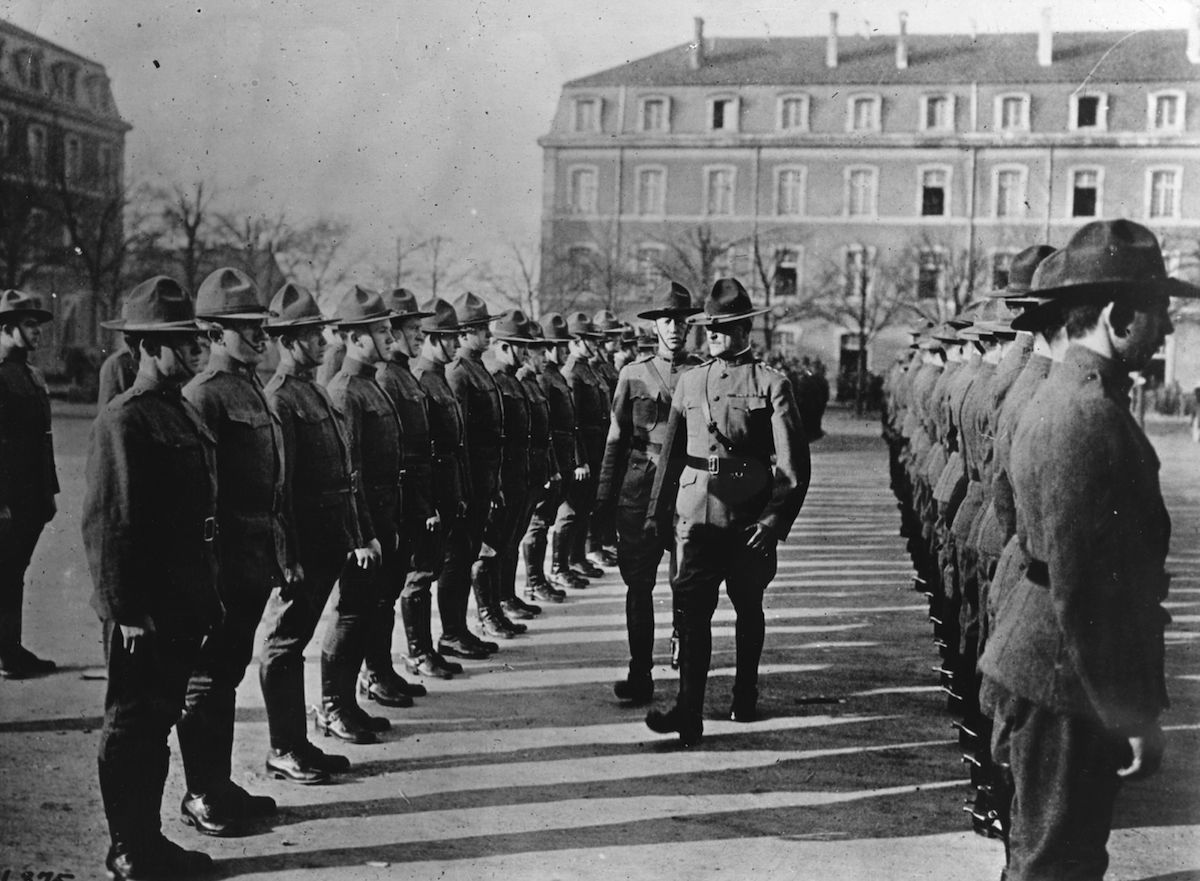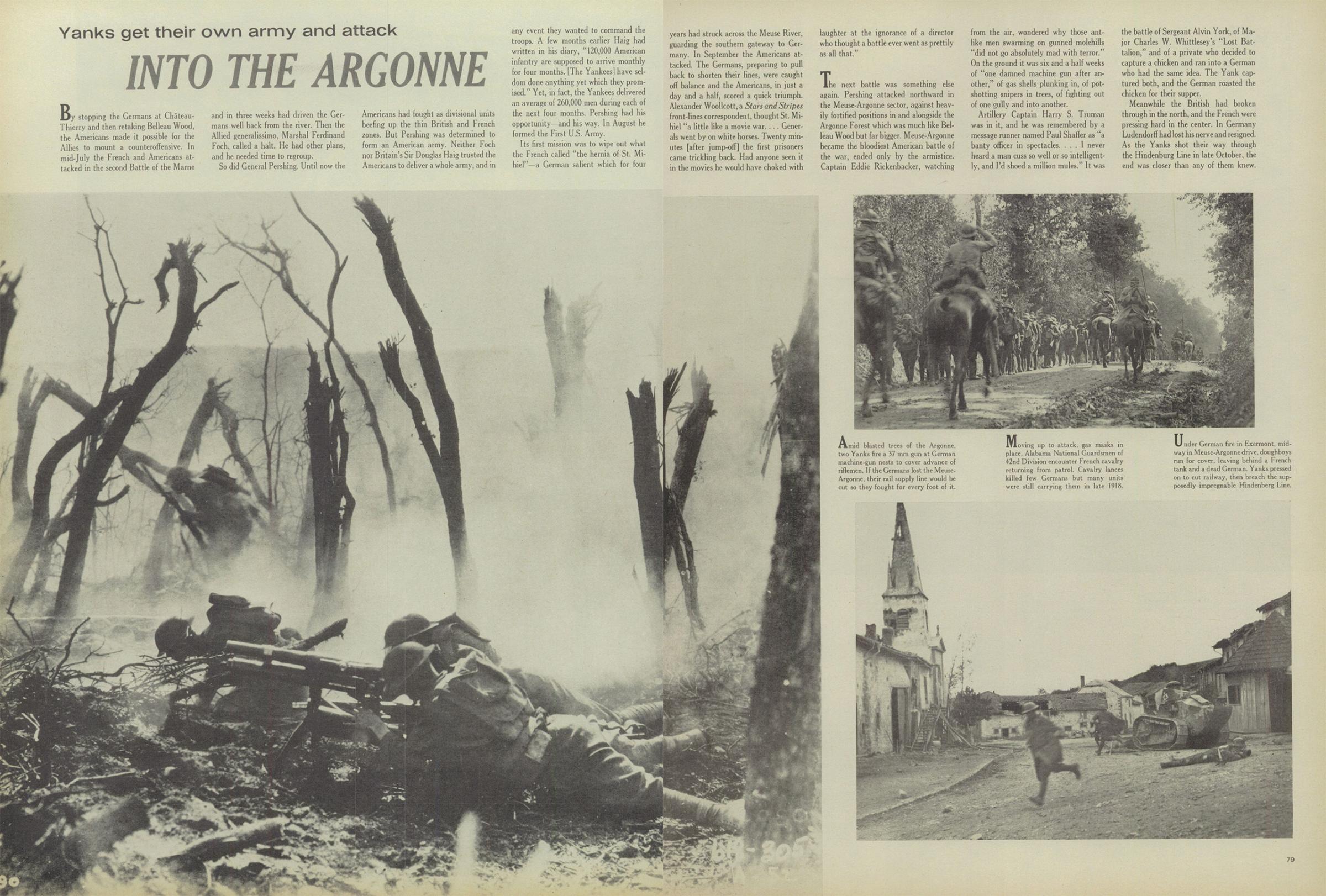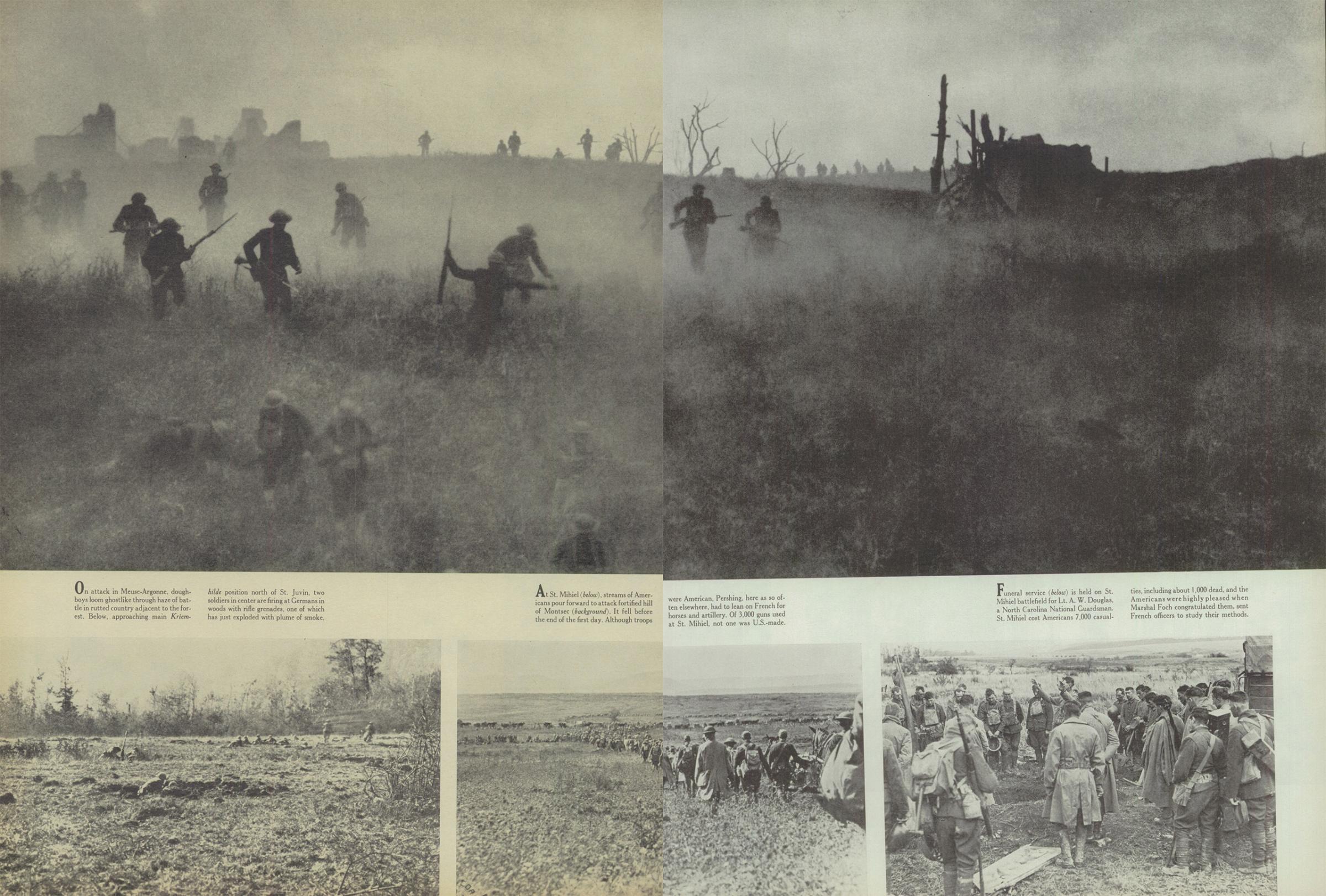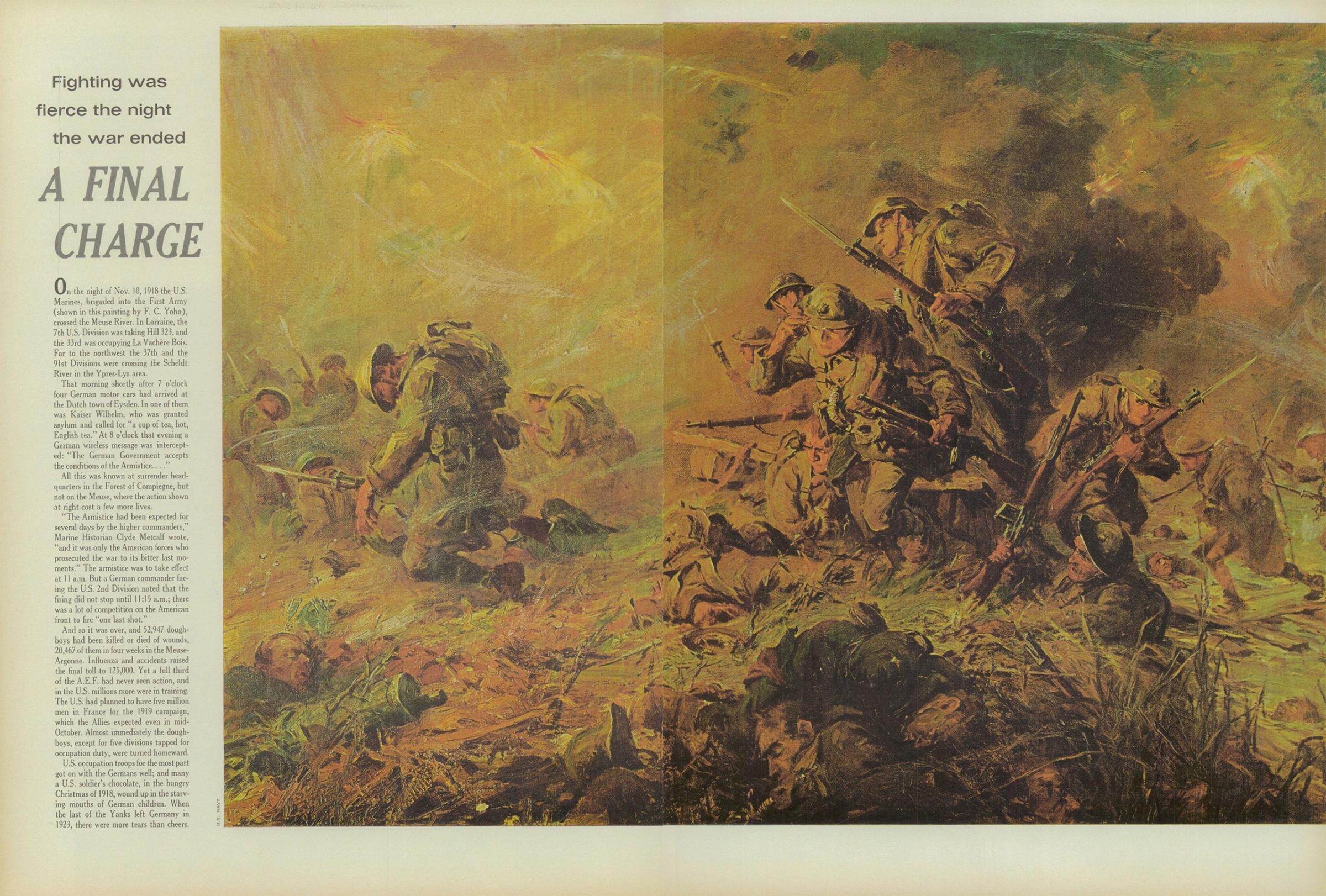
On April 6, 1917, Congress declared war on Germany, and a few days later, Theodore Roosevelt went to see President Woodrow Wilson. Roosevelt, a former Rough Rider in the Spanish-American War, asked Wilson for permission to raise a division of “horse riflemen” so that he could lead troops in Europe. Not wanting to strengthen an opponent (Roosevelt’s 1912 third-party run against him for the presidency won 27.4% of the vote), Wilson refused. A clearly perplexed Roosevelt later commented to Wilson’s adviser Colonel Edward House that he didn’t understand how the President could deny his request, which was simply to be “allowed to die.” House’s response was blunt: “Oh? Did you make that point quite clear to the President?”
But the new American Expeditionary Force (AEF) did need a leader.
The problem was that “there just wasn’t a deep pool from choose from,” Professor Michael Neiberg, chair of war studies at the United States Army War College and author of Dance of the Furies: Europe and the Outbreak of World War I tells LIFE. No American had commanded on the scale that the European war required. But John Pershing, who ended up with the job, had a solid background: He was talented, capable and, though junior to five other major generals, robust at age 56. Secretary of War Newton Baker liked him, and he had a wide breadth of experience. “He had been in pretty much every American action since after the Civil War,” Doran Cart, senior curator at the National WWI Museum and Memorial tells LIFE. It also didn’t hurt that his father-in-law, Senator Francis Warren, served as chairman of the Committee on Military Affairs.
More from TIME
The lack of military leadership was only one of the many areas in which the United States was—despite years of warning that war was coming—not quite ready for the scale of the trial that lay ahead.
Fighting men were needed. At the time, the Army only had 127,588 officers and men, and the National Guard 80,446. Hundreds of thousands more would be required. On May 18, the Selective Service Act instructed local boards to register men for a draft.
The response was quick, and men whose backgrounds would illustrate the wide-ranging breadth of the war’s impact answered the call toe fight. Roosevelt’s four sons—Archie, Kermit, Quentin, and Ted—all joined. Harry Truman, who had served in the National Guard, signed up with the field artillery. Though underage, William Shemin demanded that his parents help him enlist. Recruiters at the Kansas state fair turned down 16-year-old Frank Buckles, who then headed to Oklahoma City, where he was soon allowed to join the ambulance corps after insisting that his family Bible back home contained proof of an early enough birth date. Henry Johnson became part of the 15th New York (Colored) Infantry Regiment. Charles Whittlesey was made a captain with the 77th Division. Henry Gunther was conscripted, but, according to his great-nephew Joseph Long, he had no desire “to be killing Germans.” Alvin York, an accomplished marksman who was a conscientious objector, realized after two days of intense prayer that God wanted him to fight evil.
Few of the new recruits, however, knew how to handle weapons. So the doughboys—a 19th-century nickname for infantrymen—underwent basic training at dozens of camps. F. Scott Fitzgerald, who had dropped out of Princeton to fight, trained at Fort Leavenworth under Captain Dwight D. Eisenhower. York trained at Camp Gordon, Georgia, and recalled of his urban comrades that they were hopelessly unprepared: “They would not only miss the targets, they would also miss the hills on which the targets were placed.”
A lack of equipment did not help. Without enough weaponry to go around, many soldiers drilled with wooden rifles. And the training field wasn’t the only place problems arose. Shemin recalled that during his time at Camp Greene in Charlotte, North Carolina, some of his fellow soldiers harassed him for being Jewish. The military was also strictly segregated, and Lt. Charles Houston vividly recalled “the hate and scorn showered on us Negro officers by our fellow Americans.”
Meanwhile, as Assistant Secretary of the Navy, Theodore Roosevelt’s distant cousin Franklin helped make sure the fleet grew from 197 ships to more than 2,000. “They [were] creating a modern bureaucratic army with these huge divisions, a general staff and branches that handle specialization,” Jennifer Keene of Chapman University tells LIFE. “It is amazing how fast it happened.”
American society also had to be remodeled to fit the needs of wartime. Government and private efforts were coordinated, a move that would prove helpful during the Great Depression and the Second World War as well, and the Army was streamlined. Under the leadership of Herbert Hoover, newly returned stateside, the U.S. Food Administration called on citizens to preserve staples. To cope with a shortage of workers that resulted from conscription and a drop in immigration because of the war, posters called for women to fill the jobs that had been left empty. “For Every Fighter a Woman Worker,” they declared, and “Stenographers! Washington needs you!” In response, women did everything from clerking in offices to operating railroad machinery. “There was no task that occurred,” says Cart, “that women did not take part in.”
Composers penned patriotic tunes, such as George M. Cohan’s “Over There.” Secretary of the Treasury William McAdoo had movie stars like Mary Pickford and Douglas Fairbanks sell Liberty Bonds to fund the war effort. The Division of Pictorial Publicity enlisted artists who produced 1,400 illustrations for posters, pamphlets, and billboards. The group’s most famous image showed a stern Uncle Sam imploring, “I Want You For the U.S. Army.” At the same time, the government crushed criticism of the war with the passage of the Espionage Act and the Sedition Act.
Before Pershing headed for Europe on May 28, Secretary of War Baker offered him a simple directive: “I will give you only two orders, one to go to France and the other to come home. In the meantime, your authority in France will be supreme.”
Soon ships filled with men streamed across the Atlantic. Poet Joyce Kilmer recalled his precarious crossing and fear of German subs, and how a line of men “as long as the mess-line” waited for Father Francis Duffy to hear their confessions.
Get your history fix in one place: sign up for the weekly TIME History newsletter
The war the Doughboys entered was not going well for their allies. Horrified by the staggering loss of life resulting from the Europeans’ strategies, and seeking to highlight America’s contributions in any postwar peace negotiations, Pershing insisted on keeping American troops “separate and distinct.” After heated discussions with the other commanders, the AEF was given responsibility for a part of the front in the southern Lorraine sector, with the British on the northern flank defending the English Channel, and the French in between defending Paris.
By the end of the month, 183,00 Americans had arrived in Europe. While Pershing wanted to keep the forces separate, his troops first needed training, and ttheir commanders set them up with their French and British counterparts in order to obtain trench, artillery, and gas experience. And, though most of the 370,000 African-Americans in the AEF performed manual labor, many worked as combat engineers and two black combat divisions were established under foreign command.
“As an army they are very inexperienced,” observes Neiberg. “But they are enthusiastic. They are well fed. And they are backed by this unbelievable industrial power.”
Remembering the First World War in Images









Fearing the influx of fresh troops, the Germans sought to launch a decisive assault before the Americans were ready for battle.
Under the leadership of General Erich Ludendorff, that assault took the form of the Spring Offensive, a multipart attack that took advantage of the fact that—after Russia and Germany signed the Treaty of Brest-Litovsk on March 3, 1918—Germany could shift all of its efforts to the western front. On March 21, Ludendorff set off the first part of plan: Firing more than 9,000 artillery shells in the first minute, German forces crossed the Somme River, separating the British and French forces, taking 70,000 prisoners and advancing 40 miles towards Amiens.
Hoping to keep up the pressure, Ludendorff then began the second part of the offensive, which included a series of minor raids.
Near the town of Seichprey, south of Verdun, storm troopers attacked at 3 a.m. on April 20, catching members of New England’s 26th Infantry Division ill-prepared for their first engagement. Hurling artillery mixed with gas, the Germans overran the trenches and captured the battalion supply station. As the men fought back, Chaplain William Farrell tended to the wounded and dying and delivered ammo to men. When a gunner was knocked out, Farrell manned the gun and earned the nickname the Fighting Parson.
And on May 15, in the Argonne Forest, the Germans caught up with the 93rd Harlem Hellfighters, one of the black AEF divisions. Henry Johnson and Needham Roberts, on sentry duty, heard the clicking of wire cutters before they saw the advancing troops. Despite being shot in the head, Johnson kept firing his rifle. When it jammed, he used it as a club. And when the Germans tried to capture a wounded Roberts, Johnson pulled out his bolo knife, recalling later, “Each slash meant something, believe me.” He succeeded in killing four and wounding up to 20 others, despite being shot and cut 21 times.
Ludendorff then launched his third part of the offensive on May 27, when his troops quickly overran French and British forces, pushing them back to the River Marne.
It was at this time that the doughboys set off on their first assault. Their mission: capture Cantigny, a farming crossroads surrounded by chalk cliffs 20 miles southeast of Amiens, which would be an advantageous defensive observational position. As the Americans dug a trench line, they endured bombardments by gas shells. “For 16 hours I worked with my gas mask on,” recalled Sergeant Howard Cooper, “and man after man kept falling to the ground.”
But then, on May 28, after a sustained Allied barrage and the launching of smoke and gas shells, the Americans swarmed through the morning fog. Assisted by French artillery, flamethrowers, air cover and tanks, doughboys of the 28th Infantry Regiment secured the village within 35 minutes, clearing out cellars and trenches with flamethrowers. “The air was full of trees, stones, timber, equipment, bodies, everything you can imagine,” remembered Sergeant Dan Edwards of the 3rd Machine Gun Battalion.
After the French withdrew their equipment, the Americans endured three days of German counterattacks, sustaining 1,067 casualties. “Holding the village against seven counterattacks during the next three days,” wrote Alban Butler, “was a far greater task than its capture.”
More than one million Americans served in France, getting a taste of what the Allies and the Central Powers had endured for years: wounds, death, bloated corpses and stagnant pools of poisoned water. “There was never a shortage of blown-up bodies that needed to be rushed to the nearest medical care,” recalled Buckles. The deaths only increased with the arrival of a virulent form of the flu that swept through the lines.
Throughout, the nascent American air force offered reconnaissance and air support. Quentin Roosevelt flew a Nieuport 28, proudly writing home in early July that he downed his first enemy, causing his father to exalt, “The last of the lion’s brood has been blooded!” Yet a few days later the Germans shot down Quentin’s plane. Realizing that the American was the son of the former President, the Germans buried him and fashioned a cross from a broken propeller. The death of his favorite son devastated Roosevelt, who wrote that “it is infinitely sad to have a boy die in his golden youth.”
But, even as the losses mounted, the tide was starting to turn.
American and French forces had pushed the Germans back. After the Germans moved into Belleau Wood, a small, forested plateau, the Allies tried to capture it on June 2. Faced with heavy resistance, the French retreated, and one of their officers warned the Marines to do the same, leading Captain Lloyd Williams to declare, “Retreat, hell! We just got here.”
The men advanced into Belleau Wood, and there, in the dense forest, they would battle for three gruesome weeks. “Day and night… men fought in its corpse-choked thickets, killing with bayonets and bombs and machine gun,” recalled Captain John Thomason Jr. The fight was the deadliest the Marines had fought up to that point, but they proved so fierce that the Germans dubbed them Teufelshunde, “Devil Dogs.” By June 26, the Marines captured the forest, as well as the villages of Vaux and Bouresches. They had stopped the German advance to Paris.
“If those in front of us are fair specimens of the average American troops,” wrote German corporal Earl Recklinghausen, “and there are as many as they say there are, then goodbye for us.”

Read more in LIFE’s new special edition, World War I: The Great War and the American Century, available on Amazon and in the TIME Shop.
More Must-Reads from TIME
- Donald Trump Is TIME's 2024 Person of the Year
- Why We Chose Trump as Person of the Year
- Is Intermittent Fasting Good or Bad for You?
- The 100 Must-Read Books of 2024
- The 20 Best Christmas TV Episodes
- Column: If Optimism Feels Ridiculous Now, Try Hope
- The Future of Climate Action Is Trade Policy
- Merle Bombardieri Is Helping People Make the Baby Decision
Contact us at letters@time.com